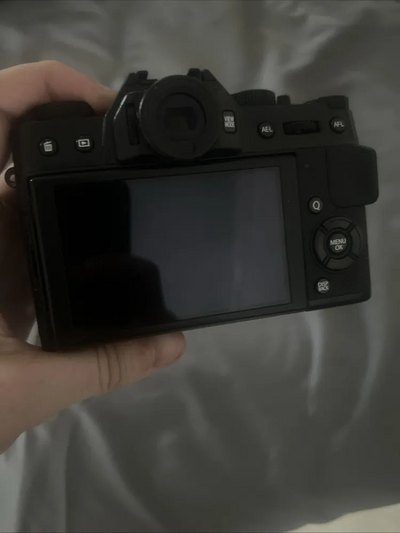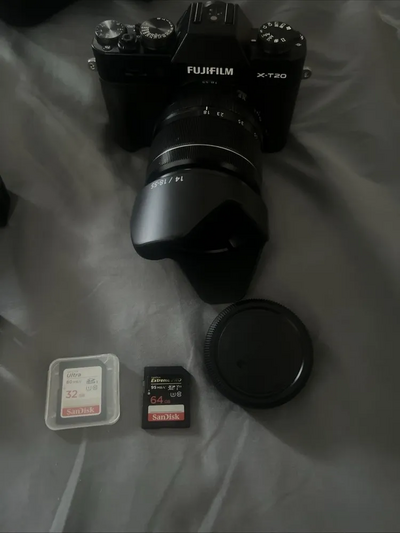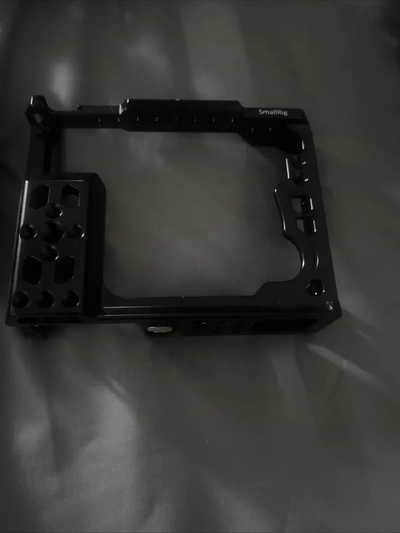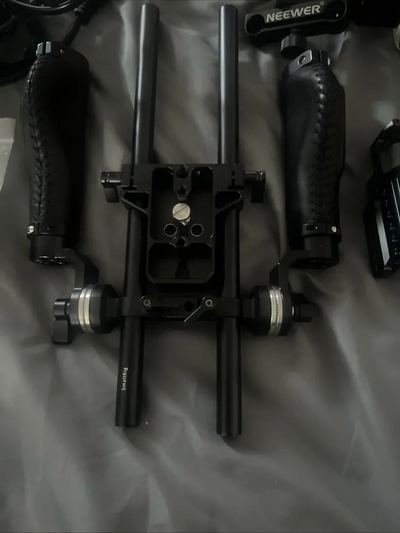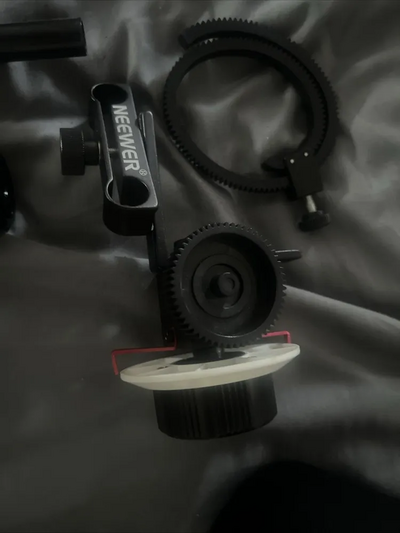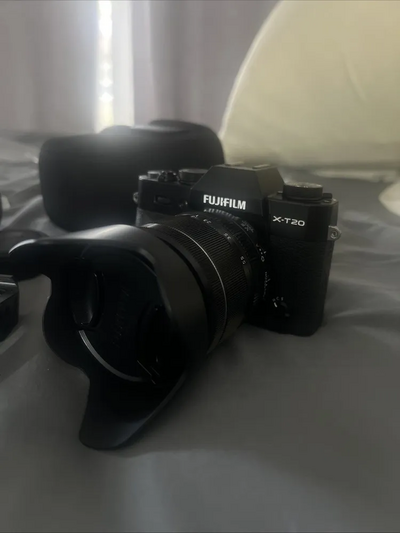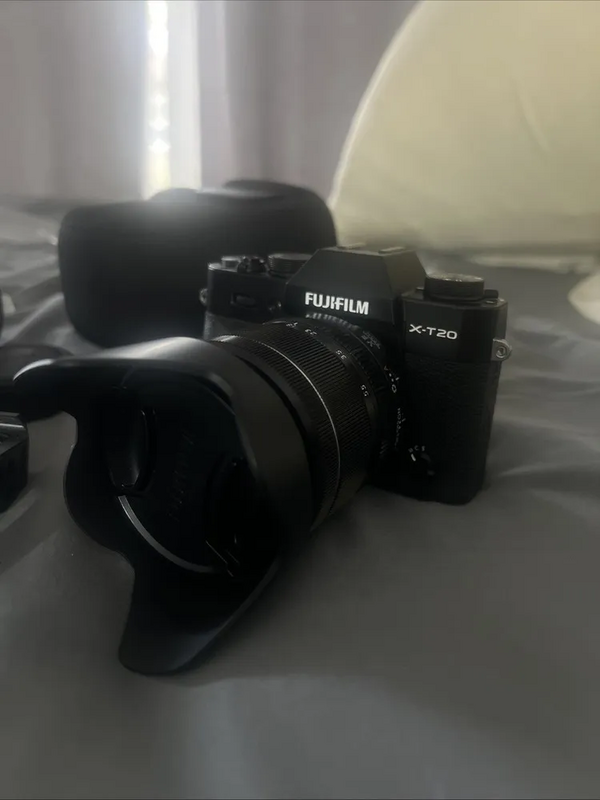
Fujifilm X-T20
| Brand | Fujifilm 2017 |
| Model | X-T20 |
| Released Year | 2017 |
| Type | Digital Cameras |
| Series | X Series |
| Color | Black |
| Video Resolution | 4K UHD at 30fps |
| Status | Discontinued |
Quick view
Overview
The Fujifilm X-T20 is a mirrorless digital camera that was introduced in 2017 as part of the X Series. It features a 24.3MP APS-C X-Trans CMOS III sensor which provides high resolution images with excellent color reproduction. The camera supports 4K video recording and has a 325-point hybrid autofocus system for quick and accurate focusing. Its compact and lightweight body is made from magnesium alloy, making it durable yet portable. The camera’s 3-inch tilting touchscreen LCD allows versatile framing and convenient control. Connectivity options include Wi-Fi for easy sharing and remote control functionality.
Specifications
| Screen Size | 3 in |
| Color | Black |
| Battery Type | Lithium-Ion |
| Series | Fujifilm X Series |
| Type | Digital SLR |
| Maximum Resolution | 24.3 MP |
| Model | Fujifilm X T20 |
| Connectivity | Wi-Fi |
| Charger Included | Yes |
| Features | Auto Focus |
| Country/Region of Manufacture | Japan |
| Sensor Type | 24.3MP APS-C X-Trans CMOS III |
| ISO Range | ISO 200-12800 (expandable to 100-51200) |
| Video Resolution | 4K UHD at 30fps |
| Autofocus Points | 325-point hybrid AF system |
| LCD Screen | 3-inch tilting touchscreen |
Images
Key Advantages
The Fujifilm X-T20 offers outstanding image quality with its APS-C sensor and X-Trans technology. Its hybrid autofocus system is fast and reliable, improving usability in various shooting conditions. The 4K video capture is a valuable feature for videographers seeking high-resolution footage. The compact design and build quality make it an attractive choice for travel and street photography. Additionally, the camera's extensive lens ecosystem guarantees flexibility in creative expression. Wi-Fi connectivity enhances user experience by facilitating immediate sharing and remote operations.
Limitations
The Fujifilm X-T20 has a limited battery life compared to some of its competitors, which may require carrying extra batteries for extended use. It lacks in-body image stabilization, relying on lens stabilization which may limit stabilization options. The camera does not have weather-sealing, reducing its suitability for harsh environmental conditions. Its electronic viewfinder has a relatively low resolution compared to newer models. The absence of a fully articulating LCD screen restricts some shooting angles. Additionally, the autofocus in low-light situations may be slower than modern mirrorless cameras.
FAQ
What sensor does the Fujifilm X-T20 use?
The Fujifilm X-T20 uses a 24.3MP APS-C X-Trans CMOS III sensor that delivers high-resolution images with excellent color accuracy.
Is the Fujifilm X-T20 capable of recording 4K video?
Yes, the X-T20 supports 4K UHD video recording at 30fps, making it suitable for high-quality video projects.
Does the Fujifilm X-T20 have in-body image stabilization?
No, the X-T20 does not include in-body image stabilization; it relies on optical stabilization in compatible lenses.
Is the Fujifilm X-T20 still in production?
No, the Fujifilm X-T20 has been discontinued since 2019 and replaced by newer models.
What type of autofocus system does the X-T20 employ?
It features a 325-point hybrid autofocus system combining phase detection and contrast detection for fast and accurate focusing.
Can I connect the Fujifilm X-T20 to a smartphone?
Yes, it includes built-in Wi-Fi allowing wireless image transfer and remote camera control via compatible smartphone apps.
What is the screen type on the Fujifilm X-T20?
The camera has a 3-inch tilting touchscreen LCD that facilitates convenient framing and menu navigation.
Disclaimer
The content on is provided for general informational purposes only. We do not guarantee the accuracy, completeness, or reliability of any information, specifications, or visuals presented on the site.
is not responsible for any content, images, or data uploaded or shared by users. Users are solely responsible for the content they submit.
We may include links to third-party websites for convenience. We do not endorse or take responsibility for the content or policies of any external sites.
Use of the site is at your own risk. Always verify critical information independently before making decisions based on content from this website.

